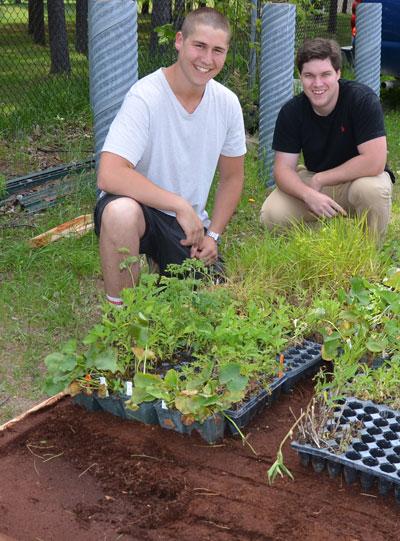First floating wetlands

Launch of floating wetlands is first for Ausable Bayfield Conservation
Grand Bend Community Foundation provides grant for project to create two floating wetlands in Old Ausable Channel to reduce excess nutrients such as nitrogen and phosphorus
Ausable Bayfield Conservation is preparing to launch its first two floating wetlands.
Floating wetlands are a relatively new way to improve aquatic health. These floating islands are like rafts and will be placed in the Old Ausable Channel (OAC) in the Grand Bend area.
“These two floating wetlands should assist in reducing nutrients, such as nitrogen and phosphorus, that can result in the dense growth of aquatic plants,” said Kari Jean, Aquatic Biologist with Ausable Bayfield Conservation.
“If we are able to lower the amount of decomposing plant matter, then this may result in higher dissolved oxygen in the water,” she said. “Two rafts on their own won’t eliminate all the excess nutrients in the channel but this pilot project is a good start.”
As the plants grow, the roots grow down through the layers of the floating wetlands, reaching into the water, where they will take up excess nutrients from the water of the channel. The growing root mass provides habitat for microorganisms. These small organisms help to filter the water and also provide a food source for fish. The growth of plant roots beneath the raft provides shade, shelter, and habitat for fish and aquatic life.
A short launch ceremony for the floating wetlands will take place on Wednesday, June 18 at 10 a.m., at the Southcott Pines Park Association (SPPA) clubhouse, off Lakeview Road.
The Grand Bend Community Foundation has provided a grant for this pilot project.
Volunteer Mark Lowenstine, of Denfield, has helped design the floating wetlands. Ausable Bayfield Conservation summer students Joe Vandenberg and Austin Spencer have built the two structures that are like rafts. Each includes a cedar frame that holds recycled two-litre pop bottles to help it float.
Community volunteers from Southcott Pines will help plant plugs into the burlap and soil material that are part of the floating wetlands. The volunteers will plant wetland-friendly plants such as Marsh Marigold, Monkey Flower, Sedges, and Bulrush. These plants in the floating wetlands are to take up nutrients such as nitrogen and phosphorus.
Ausable Bayfield Conservation staff members will monitor nutrient concentrations before and after the floating wetland is installed to see if there are changes.
There have been reported winter fish kills in the Old Ausable Channel. (A fish kill or die-off is when fish are found dead at a specific location as a result of natural causes or environmental factors such as reduced oxygen, increases in water temperature, algal blooms, disease, or pollution in the water). Ausable Bayfield Conservation is monitoring dissolved oxygen concentrations using eight loggers at different sites within the Old Ausable Channel.